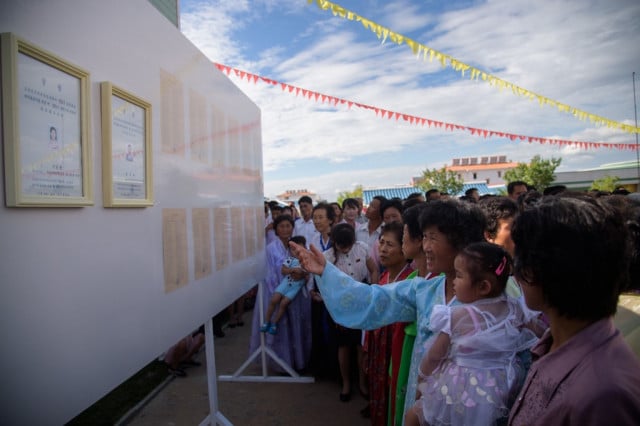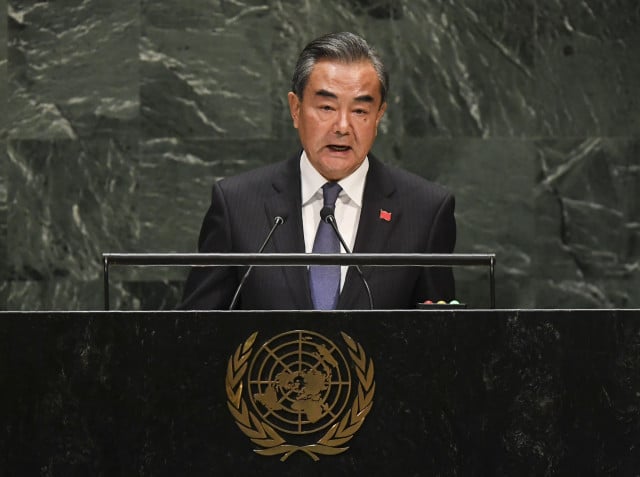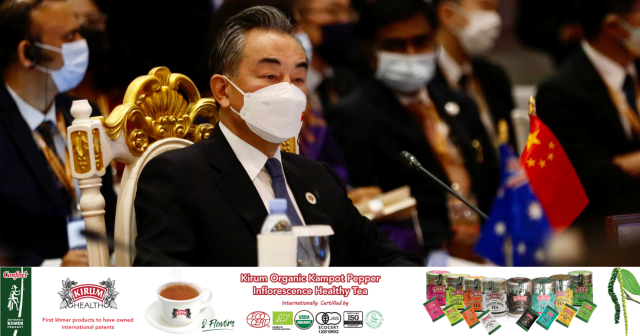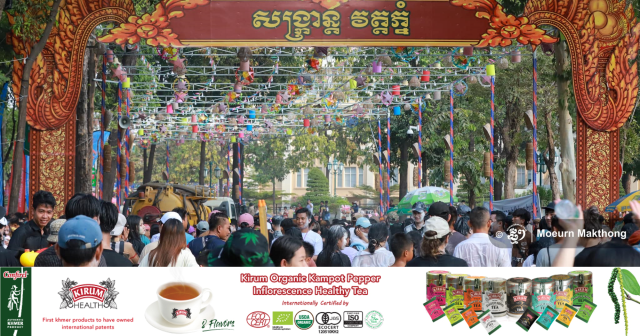Archeologist to Pursue Higher Education
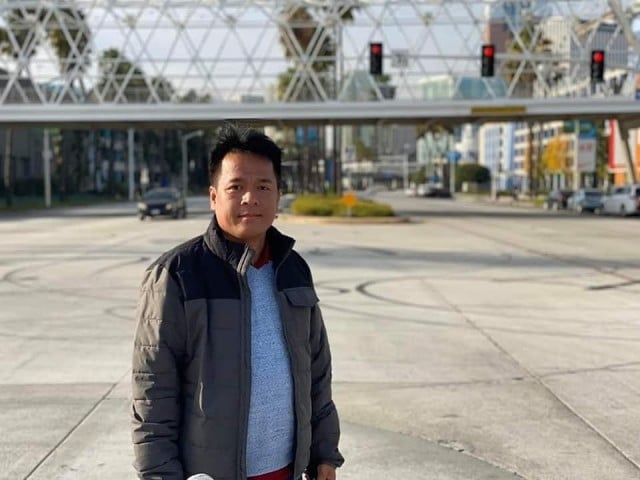
- By Po Sakun
- August 17, 2021 2:15 PM
Disney advisor studies Khmer treasures for next generation
PHNOM PENH--Archaeologist Chen Chanratana, who introduced Khmer culture and civilization in the Walt Disney animated film Raya and the Last Dragon, is preparing to pursue a postdoctoral degree in media in the US.
He sees education as a tool to lift people not only out of poverty in wealth but also out of poverty in knowledge.
Chanratana, who holds a doctorate from France, never considers giving up on education. Despite working and receiving health treatment in the US, he is still eager to embark on his postdoctoral study.
Chanratana, whose father was an actor in the Sangkum Reastr Niyum (Popular Socialist Community) era, said he studied hard not only because he hated poverty but because he hoped to go abroad like his father.
His education from high school to bachelor degree
Born in Phnom Penh in 1980, Chanratana was raised in the Boding building (white building) where homeless people, drug addicts and gamblers lived in slum conditions.
Despite living in an anarchic area, he was not influenced by the bad environment. Instead, he devoted his time to studying so that he could fulfill his dream of flying abroad without having to spend his own money.
“My father was an actor, and he went overseas a lot,” Chanratana said.
“When asked about the countries he had been to, my father told me that foreign countries had snow and were beautiful. I wanted to visit and fly to foreign countries.
“My father told me that I would have to study hard if I wanted to visit foreign countries free of expense. Even since then, I only thought of studying.”
After the war, his family started everything from scratch, only earning enough for one day. His family, however, always encouraged him to go to school.
Graduating from high school in 1996, Chanratana, with a love of culture and history, decided to apply for a tour guide course in English in 1997, regardless of his limited English skills.
“As soon as I was selected to study the tour guide course, I started to learn English, French, Japanese, Thai, and newspaper translation,” he said. “I was always in doubt as to how other people could get fluent in languages while I was having a hard time learning. I was upset and always questioning myself.”
After completing the course, Chanratana worked as a volunteer guide for a tour company. He struggled to make a living and, intrigued by Khmer ancient temples, sought a scholarship from the Faculty of Archeology but failed to get one for two years.
“When I was young, my father often took me to the Royal Palace and the National Museum, which made me fond of archeology,” he said. “It is fortunate that I have found my true self and what I love to do in life. I have followed the path since then.”
While trying to get this scholarship, Chanratana got a different one to study economics in 1997-1998 while he was still working as a tour guide. He was finally awarded a scholarship to study archeology in 1999. He quit his economics major as he did not like it.
Chanratana studied archeology for five years and was required to take French classes for 20 hours a week because 90 percent of the study materials were in French.
It was the French Department in which he was studying that offered him a fully funded trip to France.
“I was provided a monthly stipend for my study and an opportunity to visit France for free, which made me more motivated to study,” he said. “Only outstanding students were selected to visit France. And in 2001, I tasted the first flying experience ever in my life.”
Pursuing education in France
After graduating with a bachelor’s degree in archeology in 2004, Chanratana pursued a master’s degree in history of art in France in 2005. Although his French was still limited, he was determined to pursue higher education in France.
“At that time, I was happy and nervous because I was not fluent in French yet and I had to study with French people,” Chanratana said. “On the first day of school, I wanted to cry, but I told myself that I had to be brave and keep holding on until I made it.”
To practice his French, Chanratana worked part-time at a Cambodian-owned market, selling grilled chicken, potatoes and sandwiches while on vacation.
“At that time, I learned the language used in the market. With this job, I could buy extra essential stuff since the allowance was hardly sufficient for rent and food.”
After graduating with his master’s degree, Chanratana was offered an opportunity to apply for a doctoral scholarship. Although his potential was noticed by his professors, Chanratana doubted his ability to pursue a doctorate.
“I had just finished my master’s degree, and I wanted to get another doctorate, but I was not confident,” he said. “It was like a pig scared of hot water. But I had another thought that I had to keep learning.
“My professor helped me register for a scholarship, but I had to return to Cambodia to apply. I didn’t want to waste my time, so I pursue a doctorate right after I finished my master’s degree.”

His doctoral research journeys
While pursuing his doctorate, Chanratana returned to Cambodia for his thesis on the Koh Ker temple, which took him five years to finish.
He was doing his research while working as a tour guide, a music video director, and a producer of a cultural television program between 2007 and 2009.
His doctoral dissertation was about “Koh Ker and Jayavarman IV”. He struggled to find any documents supporting his dissertation as not many authors had written about this topic.
Chanratana spent about four years researching at the Koh Ker temple site, admitting he used to think of giving up because he was stuck on what to write.
“Jayavarman IV was accused of interfering with the Kingdom, but I thought he was a legitimate king,” Chanratana said.
“Therefore, I had to find an argument to defend my claim. I did not sleep for months. I was in the library from 10 am to 6 pm. I have loved the Koh Ker temple since 2003. I went to the temple about four times a day. I did this for about ten years to conduct site research and compile the information as a document.”
In 2010, he returned to France and completed his doctorate in late 2011. However, he became distraught when his father passed away.
“My father died of a stroke,” he said. “I wasn’t able to come to his funeral because I didn’t have money for a plane ticket while I was busy completing my graduation work. My mother told that even if I came, I could not help anything. So, it would be better to keep the money for his funeral.
“That was when I had a serious mental illness. I could not think of anything, but I had to finish my school as promised with my father.”
His work after the doctorate
After receiving his doctorate, Chanratana returned to Cambodia and worked as a history professor at Paragon University and the University of Cambodia (UC).
In addition, he worked with the Royal Academy on several research projects. He eventually worked at the Royal University of Phnom Penh before leaving for his postdoctoral study in the US.
Chanratana also established his research team called “Kerdomnel Khmer” in 2008, which focuses on expanding and disseminating research as well as compiling documents on Khmer culture and civilization for the next generation of Cambodians to study.
The King also appointed him as an advisor to the Ministry of Information, assisting in cultural research.
Chanratana has been a consultant at Walt Disney pictures since late 2018. Working in the US, he introduced Khmer culture and civilization to the studio, saying he had suggested clothing of the characters in “Raya and the Last Dragon” to be made more ancient Khmer.
“I explained the origins of the Angkorian civilization, sculptures, arts, architectures, and everything related to Khmer culture to them,” he said. “Therefore, they could incorporate creative ideas into their stories.”
Chanrathan added that during the research process, the Disney team went to Angkor Wat, Preah Khan temple, and Ta Prohm temple and the floating village in Kampong Phluk to study the sculptures, martial arts and people’s lives.
Future plans
In the future, Chanratana aims to cultivate human resources in the field of culture, civilization, and national history through online education, such as Kerdomnel Khmer's official Facebook page and YouTube channel.
He said the promotion will help Cambodian children and youths know about their identity and national treasure so that they will not lose sight of themselves.
Chanratana has published his doctoral dissertation on Koh Ker in two languages–French in 2012 and Khmer as an e-book in 2020. The physical copy in the Khmer language will be published this year while an English version will be released next year.
“How we set our goals will define our destination. It is not a mistake to be born poor, but to die poor is a mistake,” Chanratana said.
Additional reporting by Teng Yalirozy







